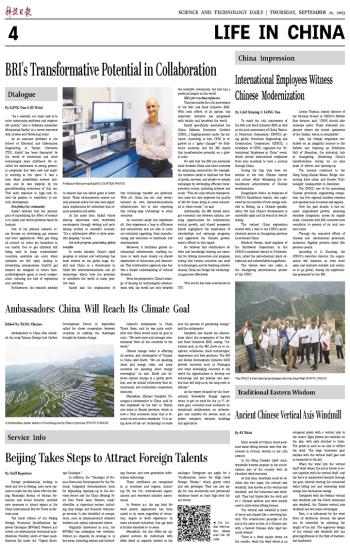
Early records of China's wind-powered water-lifting devices were first discovered in Jinlouzi, written in the 12th century.
In the Ming Dynasty (1368-1644), windmills became popular in the southeastern part of the country with its abundant wind resources.
At that time, windmills could be divided into two types, the vertical-axis windmill, also known as the vertical-sail windmill, and the horizontal-axis windmill. They had blades like the cloth sail of a Chinese sailboat and were mainly used to drive water-lifting devices.
The vertical axis windmill is made of wood and shaped like a revolving lantern. The construction principle of the sail is the same as that of a Chinese sail, with a faceted Chinese-style rigid balanced foresail.
There is a fixed square frame on the outside, while the wind wheel is an octagonal prism with a vertical axis in the center. Eight prisms are installed on the axis, with sails attached to them. The prism is used as an axis to deflect the wind. The large transverse gear meshes with the vertical shaft gear and is connected to the sail.
When the wind hits the vertical shaft wind wheel, the sail is driven to rotate together with the vertical shaft, and the force is transmitted laterally through the gear, thereby starting the connected water-lifting tool and converting wind energy into mechanical energy.
Compared with the Persian vertical axis windmill and the Dutch horizontal axis windmill, the Chinese vertical axis windmill has two major advantages:
First, it is influenced by the wind from all directions. Second, the speed can be controlled by adjusting the height of the sail. The ingenious design of the vertical axis windmill still has great significance in the field of mechanical machinery.







